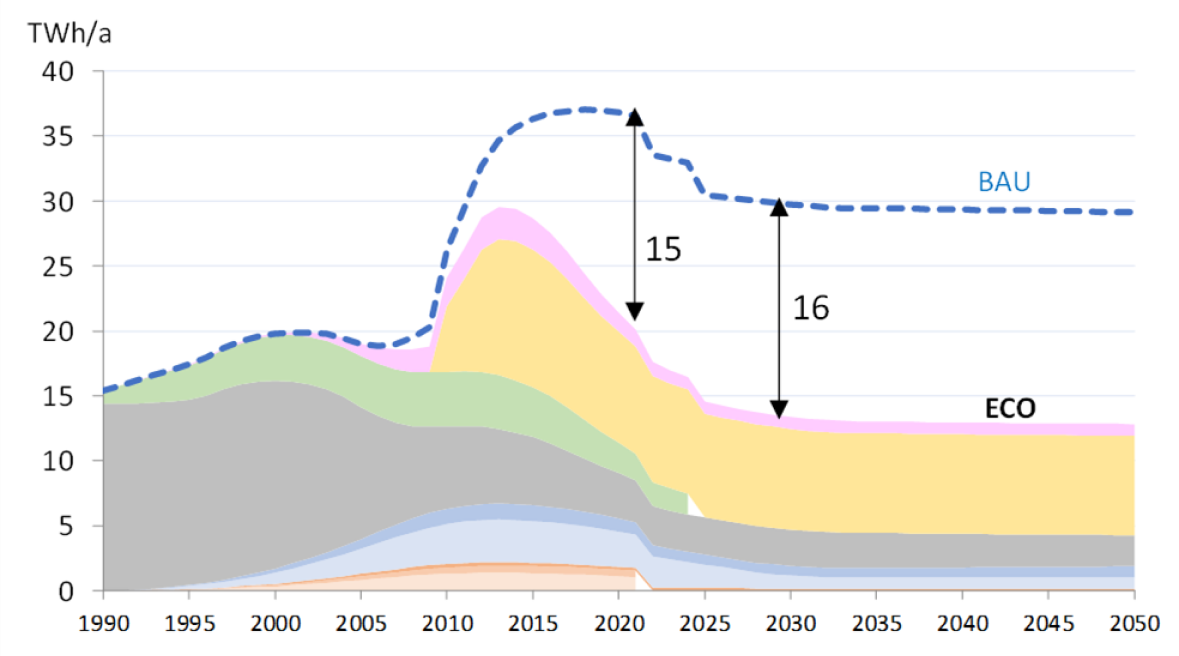Ecodesign regulation 1275/2008 on energy consumption in ‘off’ and various ‘standby’ modes was designed as a horizontal piece of legislation, covering a myriad of relevant electronic and electrical products. In 2013 the regulation was amended to include also ‘networked standby’ and add rules on standby of household coffeemakers. In 2023 the regulation was reviewed and replaced by Regulation 2023/826, which extends the scope to motor-operated building elements (e.g. blinds, doors, windows, gates, curtains), motor-operated adjustable furniture (e.g. height-adjustable desks, elevation beds) and products using a low-voltage external power supply (LV-EPS). Regulation 2023/826, which will start to apply on 9 May 2025, also reduces some of the maximum allowed off-mode and standby powers, as detailed in the “Consumers” section below.
In parallel, the policy on standby regulation has changed from a horizontal to a vertical approach. This means that requirements on ‘standby’ are gradually being made part of product-specific Ecodesign regulations when available, and these products are then removed from the standby-regulation. For example washing machines and dishwashers were removed from the scope in 2021, and cordless phones will be removed in 2025, because their ‘standby’ is now regulated separately.
Source: estimations from the Ecodesign Impact Accounting Overview Report 2024









